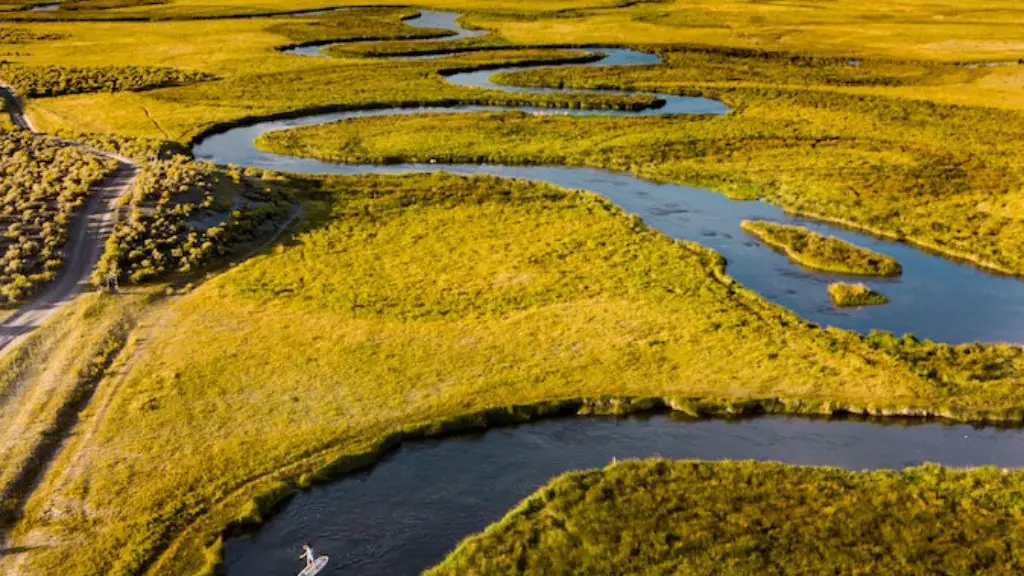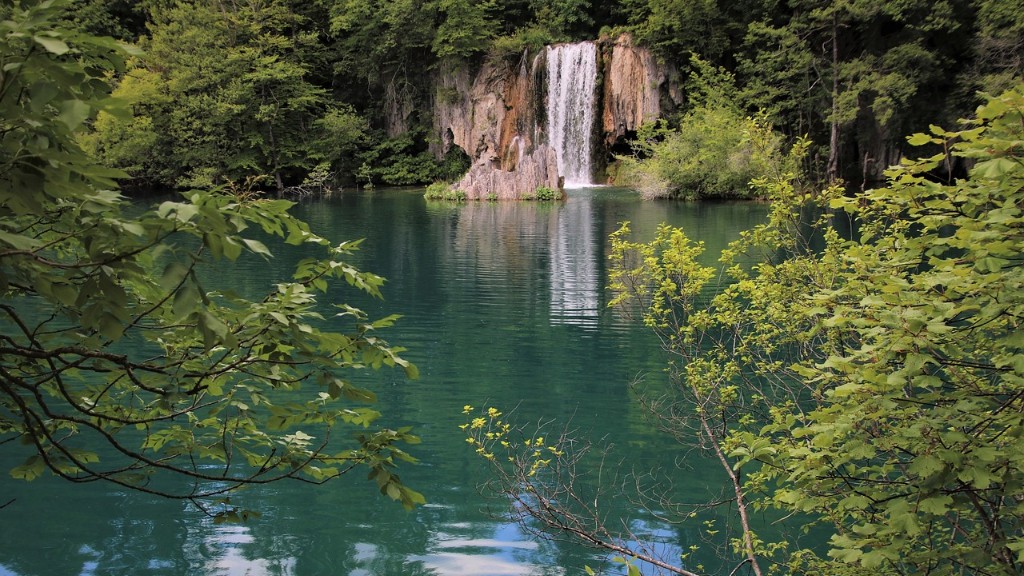Where is the Mississippi River?
The Mississippi River is one of the most important rivers in the United States. It provides drinking water, irrigation for crops and recreational opportunities for hundreds of thousands of people. It is also the centerpiece of the Mississippi Delta and a vital part of American culture, history and industry. So, where is Mississippi River located?
The Mississippi River starts in Lake Itasca in Minnesota and runs more than 2,320 miles to the Gulf of Mexico. Along the way, it forms the borders between ten states, including Minnesota, Wisconsin, Iowa, and Illinois. In Louisiana, it is the distinguished border between the states of Arkansas and Louisiana. As the river flows towards the Gulf, it divides into numerous oxbow lakes and wetlands, providing an amazing habitat for bird, amphibian and fish species while also preventing soil erosion and flooding.
The history of the Mississippi River is intertwined with that of the United States. The river has been fundamental to the exploration and growth of the country from its early settlement in the 18th century. Today, it is still a vibrant resource for the nation and is used for shipping, power generation, agriculture, recreation and other important uses.
Experts agree that preserving the Mississippi River is essential to ensure its continued success in the years to come. The U.S. Army Corps of Engineers and other organizations are actively engaged in waterway maintenance, streambank stabilization and invasive species control. These projects have significantly increased the health of the river, but there is still much work to be done.
The Mississippi Basin is home to a variety of unique species, and its health directly impacts their populations. Scientists are also studying how climate change is affecting the water cycle and the health of the river’s ecosystems. This is important since a rise in water temperatures threatens to disrupt the delicate balance of life in the Mississippi River system.
In addition, over-fishing, pollution, and urbanization are still major challenges to the river’s health. Increased regulation and better enforcement of existing laws are two strategies to combat these problems. Education and outreach initiatives are also key to raising public awareness about the importance of the Mississippi River.
Mississippi Delta
The Mississippi Delta is a region in the southeastern United States that covers the lower sections of the Mississippi River. This region is characterized by its rich landscape, cultural heritage, and abundance of wildlife. The Delta is an important agricultural region and a vital part of the United States economy.
The Mississippi Delta is home to a diverse array of wildlife, from bald eagles and river otters to blue herons and white pelicans. It is also a key habitat for numerous fish species, including largemouth bass, crappie, bluegill, and catfish. For these reasons, the Mississippi Delta is a popular destination for outdoor enthusiasts and provides recreational opportunities for fishing, hunting, birding, and boating.
The Mississippi Delta is steeped in history and culture. This includes the remarkable story of the Delta Blues – a unique style of music that was born in the region and continues to influence American popular culture today. The region is also known for its diverse population and its unique cuisines, like Creole and Cajun cooking.
The Delta also plays an important role in United States history. It is the region where cotton was first cultivated and the birthplace of the Civil Rights Movement. The region’s plantations and historic sites tell the story of the African American experience and its struggles for freedom, justice and equality.
The Mississippi Delta is a vital part of the United States and its people. Its health and future are an essential part of America’s future, and its preservation is of utmost importance.
Mississippi Watershed
The Mississippi River Watershed is the third-largest drainage basin in the United States, covering more than 1.2 million square miles. It encompasses portions of 31 states and two Canadian provinces, and more than fifty percent of the United States’ population is located in the Mississippi River Watershed.
The Watershed is divided into two Regions: the Upper Mississippi River (UMR) and the Lower Mississippi River (LMR). The UMR includes tributaries located both within and outside of the United States, while the LMR includes tributaries only located within the contiguous United States. Each of the Regions has an immense impact on the environmental health of its respective area.
The Watershed is vital to the health of the entire Mississippi River system. It helps regulate streamflow and sediment flow and serves as a buffer to help protect water quality. It is also home to many diverse species of native fish and other wildlife.
Experts agree that proper management of the Watershed is critical to the health of the Mississippi River. This includes efforts to reduce pollution, conserve land, manage water supply and water demands, and maintain the ecological integrity of the region. This can only be achieved with a combination of federal, state and local efforts.
The Mississippi River Watershed is an important part of America’s geography, history, culture and economy. It is essential that efforts are made to maintain and protect this precious resource for the future of America.
Mississippi Currents
The Mississippi River has a significant influence on the physical environment of the Gulf of Mexico. The river contains huge volumes of sediment and nutrients in its waters, and as it enters the Gulf it creates strong currents that shape the coastline. These currents also create a variety of habitats, known as Mississippi Currents, with unique resources for many species of fish and other marine life.
The Mississippi Currents are areas of high productivity and are widely utilized by fisheries. They are also a major stopover point for migrating birds and other wildlife. The currents also serve as a temporary refuge for species of fish and shellfish during extreme weather events, such as hurricanes.
The Mississippi Currents are an important part of the health of the Gulf ecosystem. Healthy populations of fish, sharks, and other large predators are largely sustained by the nutrients and shelter from the currents. This diversity of life in turn helps to foster healthy marine ecosystems and provide additional recreational and commercial fishing opportunities for humans.
The Mississippi Currents have been the focus of extensive research in recent years. Scientists have studied the currents’ effects on water quality and the movement of pollutants, as well as their effects on the overall health of the Gulf of Mexico. The results of these studies are helping to inform conservation and management of the Mississippi Currents and ensure their sustainable use and protection.
Mississippi Aquifer
The Mississippi Aquifer is an underground source of water in the central United States. It is one of the largest aquifers in the nation, covering an area of 370,000 square miles. The aquifer provides water for drinking, industry, and agricultural uses, and is a crucial resource for communities dependent on the Mississippi River.
The Mississippi Aquifer is composed of various layers of sedimentary material and is primarily composed of sand and gravel deposits. Its vast underground deposits, including sandstone and limestone, are estimated to be more than 15,000 feet deep in some areas. Because of the aquifer’s size and depth, it is a valuable source of potable water that is accessed via wells and springs.
The Mississippi Aquifer is connected to a number of major aquifers, including the Ogallala Aquifer and the High Plains Aquifer in the southwestern United States. In addition to supplying water for drinking and agricultural use, the aquifer also serves as an important source of recharge for wetlands, rivers, and other surface water bodies in the Eastern United States.
The Mississippi Aquifer is a vital resource for many communities throughout the United States and is therefore the focus of numerous research projects. These studies aim to understand the aquifer’s water resources, recharge rates, and potential impacts from climate change and other human activities. By understanding the aquifer’s characteristics and role in the water cycle, experts can make informed decisions on how to best manage and protect it.
Mississippi Ravines
The Mississippi Ravines are deep canyons that have been carved by the flow of the Mississippi River. These ravines form a unique landscape of rocky cliffs and winding gorges, and their remote locations make them ideal for rafting, boating, and other outdoor activities.
The Mississippi Ravines are home to a variety of wildlife, from bald eagles and Black Bears to wild turkeys and rattlesnakes. They are also an important refuge for endangered mussels and reptiles. In addition, the ravines provide essential habitat for amphibians and tank species like beavers and river otters.
The Mississippi Ravines are a key part of the region’s ecology and hold great historical and cultural importance. Local Native American tribes have long used the canyons for hunting and fishing, and the ravines have served as an important source of inspiration for writers and artists.
The Mississippi Ravines are in danger of being polluted by runoff from nearby farms and cities. Proper management of the ravines is critical to ensure their long-term health. This includes efforts to reduce agricultural runoff and effectively manage wastewater, as well as restore eroded banks and prevent sediment buildup.
The Mississippi Ravines offer a glimpse into the area’s rugged beauty and its captivating history. These unique canyons are a source of fascination and awe, and they are an integral part of the Mississippi landscape. It is essential that they are protected and preserved for future generations to enjoy.





